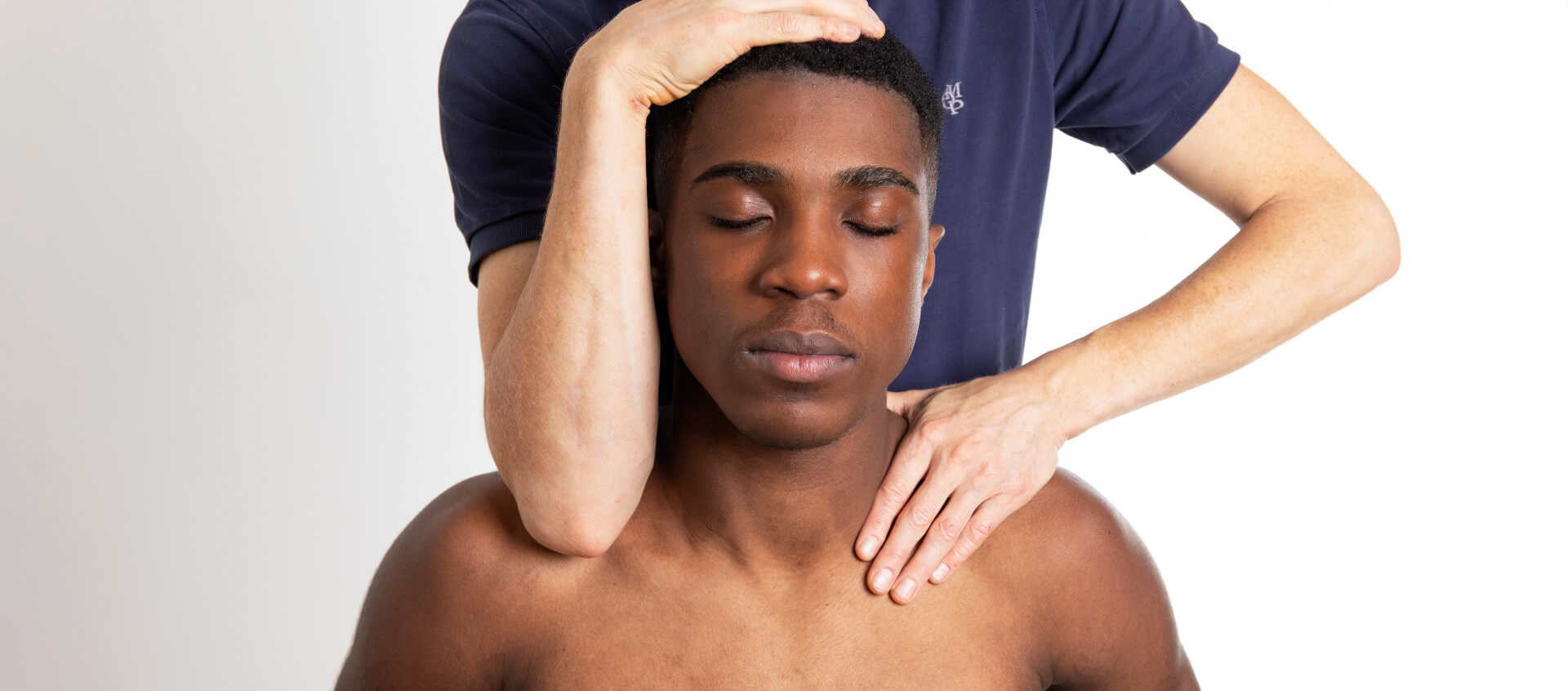
Welcome to the Centrum für Osteopathie in Düsseldorf
Jarrod Russell, Annika Tenge, Kerstin Vonstein and Veronika Hopf welcome you to their practice for osteopathy in Düsseldorf. With over 30 years of clinical experience in osteopathy and internationally recognized osteopathic qualifications obtained via University. In our practice in Düsseldorf Düsseltal, you are in good hands.
Practice Concept
The essence of our treatment philosophy lies in the holistic and scientifically grounded application of osteopathy, sports science and rehabilitation, with the aim of offering you long-term solutions for your symptoms and overall health.
In our more than 30 years of experience in the field of osteopathy, we have repeatedly come to the realization that long-term and lasting improvements can usually only be achieved if the mechanical causes of the complaints and pain are identified and treated.
For over 20 years, a large number of scientific studies have emphasized that lasting improvements for mechanical, chronic pain conditions are most successfully
treated with a so-called multi-modal approach of manual therapy treatments such as osteopathy and targeted patient-specific rehabilitation. That is why in our practice osteopathic treatments are combined with rehabilitation, sports science and rehabilitative Pilates approaches. Following osteopathic treatment, you will receive a specific training plan tailored exclusively to your needs, consisting of exercises that are to be performed at home. As soon as significant symptomatic improvement has been achieved, osteopathic treatment will no longer be used as the primary treatment approach, but rather focus will shift towards injury prevention with rehabilitation-oriented Reformer Pilates courses that are offered by highly trained instructors at Pilates am Zoo Düsseldorf, our cooperation partner for reformer Pilates and rehabilitation.
Services
What is Osteopathy?
Osteopathy is a holistic form of treatment that can be applied to a wide variety of functional disorders of the human organism.
Muscles, organs, bones, blood vessels – everything in our body is mobile. This mobility is the basis of our health. If the mobility in one body part is compromised, this can have potential ramifications on other body regions. Osteopathy specializes in recognizing and treating movement disorders.
In osteopathy, the body is always considered a unit therefore meaning that osteopathic treatment focuses not only on the symptomatic region of the body, but also the mechanical restrictions and imbalances of the rest of the body that may potentially be contributing to or resulting from the patients injury. During the treatment, mobility restrictions are removed through targeted mobilization and manipulation.
Three different systems are considered:
The aim of osteopathic treatment is to find and resolve the cause of the complaints.
The osteopath works exclusively with his hands and uses specific manual techniques. Through the use of these manual techniques it is intended to activate and support the body’s own self-healing properties. Osteopathy is not a substitute for classical medicine, but ideally works together with other medical disciplines. If the patient’s symptoms do not have a functional cause, the osteopath subsequently refers to an appropriate specialist. For many clinical conditions, osteopaths work together with your treating physician (e.g. orthopedic physicians, orthodontists, gynecologists).
Our way of working
The aim of our treatment is to find the cause of your symptoms and subsequently resolve them. We work exclusively with our hands, examine thoroughly and allow one hour for each consultation.
After a detailed examination, discussion and treatment, you will obtain a specific rehabilitation plan tailored exclusively to your needs, consisting of exercises that are to be performed at home. These exercises are intended to promote recovery. If follow-up treatments are deemed necessary, we will actively discuss your treatment plan with you.
In order to keep up to date with the latest osteopathic and sports science findings, we regularly take part in further training.
The history of osteopathy
The American physician Andrew Taylor Still is considered the founder of osteopathy.
In the 19th century, he sought a new form of medicine based on his own experiences with illness. He explored a wide variety of approaches and in particular the anatomy of the human body. Still came to the conclusion that mobility is at the centre of health and that every human being has self-healing powers that need to be activated. He researched the interactions of the organ systems and developed a new treatment concept based on manual therapy.
In 1892 he founded the “American School of Osteopathy” in Kirksville, Missouri, which still exists today. Here, Still trained his students, and here new impulses for manual therapy were developed. At the beginning of the 20th century, a patient and student of Still’s brought osteopathy to Europe via England.
Osteopathy in Germany and worldwide
Today, osteopathy is a widely used treatment method. In the USA and Australia and in some European countries, such as England and France, osteopathy is a state-recognized profession regulated by academic training in its own courses of study.
In Germany, the training of osteopaths is disorganized and not unified. However, all therapists working as osteopaths must either be a medical physician or Heilpraktiker. Jarrod Russell completed a five-year full-time osteopathic course at the University of Western Sydney in his home country of Australia and passed the Heilpraktiker examination in Germany. After her training as a physiotherapist, Annika Tenge also completed a five-year course of study at the International Academy of Osteopathy in Belgium and also has passed the Heilpraktiker examination. Both have more than 15 years of professional experience in the field of osteopathy.



